 Palo Alto Stanford Heritage
Palo Alto Stanford Heritage 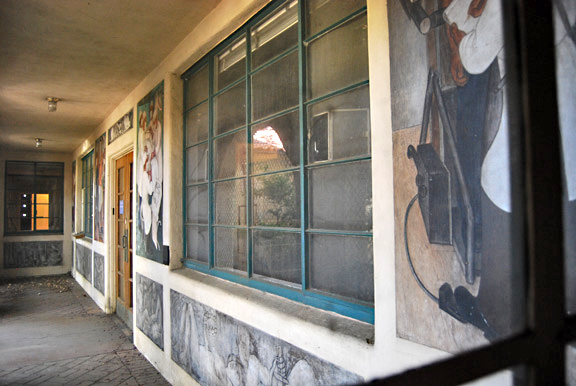
In 1932, Dr. Russell V. Lee commissioned Victor Arnautoff (1896–1979) to paint frescoes surrounding the entry of the new Palo Alto Medical Clinic. Arnautoff, born in Russia, had been a cavalry officer in the Imperial Army and a recipient of the Cross of the Order of St. George for valor. After the Bolshevik Revolution, he escaped to Manchuria and subsequently emigrated to Mexico. There he studied mural painting, becoming Diego Rivera’s assistant in the late twenties. In 1931, he and Rivera came to San Francisco to work on a mural for the San Francisco Art Institute. The Clinic was Arnautoff’s first solo commission in California. The frescoes contrast modern medicine with earlier medical methods.
The Clinic was Arnautoff’s first solo commission in California. The frescoes contrast modern medicine with earlier medical methods. Four fresco panels are in color, and these depict the modern specialties of pediatrics, surgery, and internal medicine and modern technology. Surrounding the colored fresco panels are smaller, monochromatic panels depicting primitive methods of treatment.
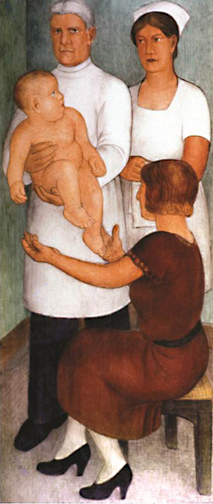
Standing in front of the Roth Building and looking to the left, we see a colored fresco of Emmett Holt (1855–1924), a distinguished American pediatrician and pioneer in children’s diseases. The monochromatic panel beneath depicts a Flathead Indian pressing a board against an infant’s head to produce a sloping forehead, believed to be a sign of intelligence.
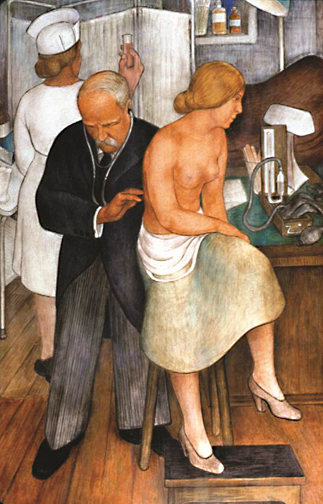
To the right is another color panel, showing Sir William Osler (1849–1919), a Canadian internist who was a highly regarded teacher and writer. Below him, the monochromatic panel depicts a witch doctor exorcising evil spirits.
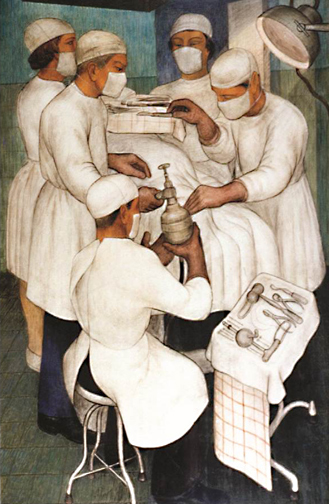
The third colored panel, to the right of the entrance door, is of Harvey Cushing (1869–1939), a Boston neurosurgeon who refined the use of the Albee saw. Beneath him, the monochromatic fresco shows a wound being cauterized with a hot poker.
The final color panel, between the right window and far wall, demonstrates the use of an early form of x–ray, a fluoroscope; the patient is a self–portrait of the artist. Beneath this panel, a monochromatic fresco shows the use of floroscopes to diagnose illness.
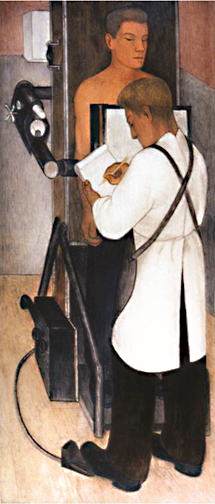
Underneath each window on the entrance wall are more monochromatic frescoes: a woman with a scythe and a man holding a set of scales, and a woman holding a laurel wreath and the man a sword. Beneath the windows, on the two wing walls of the entrance loggia, are monochrome frescoes depicting the modern microscope and Bunsen burner and the older remedies of herbs and roots. Finally, above the entrance door, we see a narrow monochromatic fresco depicting a skull and snake surrounded by books representing knowledge.
Arnautoff’s cohesive design integrated the frescoes with the wall’s fenestration and door to produce a unified, rhythmic, and forceful composition. The predominant colors in the murals echo the warm tones of the red clay tile roof, the blue-green tones of the cornice molding, window and door trim, and the beige tones of the medallions. The medallions are on the arches leading to the loggia and portray Lister, Hippocrates, Pasteur and Roentgen.
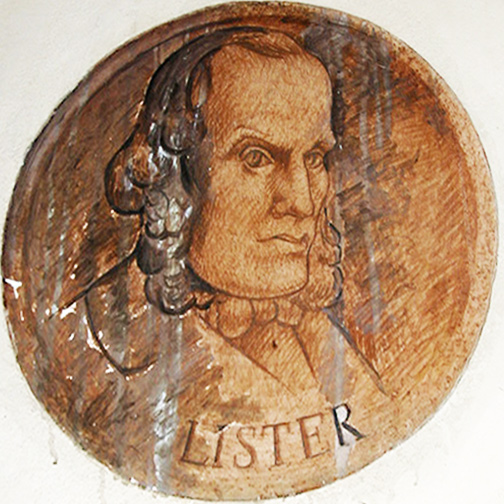
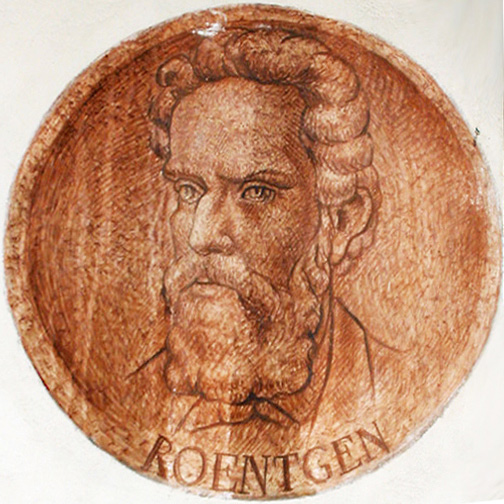
Initially, the frescoes caused a minor scandal because several patients receiving medical care were depicted in a state of partial undress. Palo Altans’ intense reaction was covered in San Francisco newspapers. In "Murals and Morals: Palo Alto’s Pulse Quickens," a San Francisco Chronicle reporter wrote, "The builders, aided and abetted by the nationally known doctors who make up the staff, have gone in for art in a big way, and the startling result has set this little college town by the ears!" Townspeople drove slowly along Homer Avenue to view the murals causing not only a traffic jam but also a threat from clinic surgeon Fritz Roth to whitewash the walls before he would move in. The murals stayed.
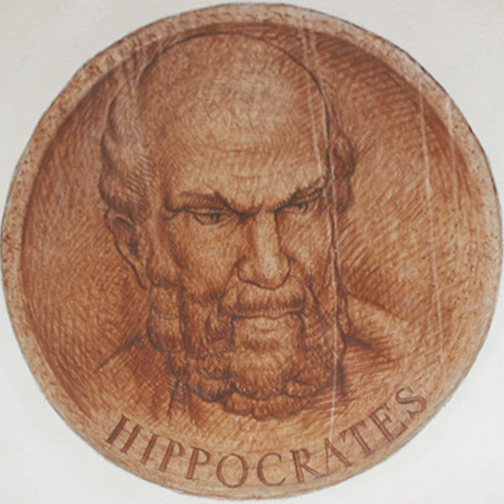
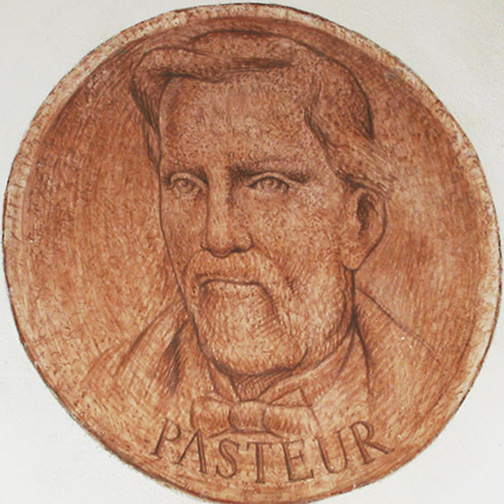
Arnautoff, whose works can be seen at Coit Tower, the Presidio, the Richmond and Pacific Grove Post Offices and at George Washington High School, is regarded as one of the best mural painters in the United States. From 1939–1960, he was a respected Professor of Art at Stanford. Controversy, however, dogged him. In 1956, he was brought before the HUAC and took the 5th Amendment. Stanford President Wallace Sterling averred that "No proven communist should hold a position on our faculty." Despite pressure from benefactors, a special university committee defended Arnautoff’s “right to hold radically different views.” Arnautoff stayed.
The preservation of these renowned murals and of the Roth Building itself is a job which the Palo Alto History Museum looks forward to embracing. ©
PAST, June 28, 2013
E-mail us at either webmaster@pastheritage.org or president@pastheritage.org.
![]() Palo Alto Stanford Heritage—Dedicated to the preservation of Palo Alto's historic buildings.
Palo Alto Stanford Heritage—Dedicated to the preservation of Palo Alto's historic buildings.
Copyright © 2015 Palo Alto Stanford Heritage. All rights reserved.